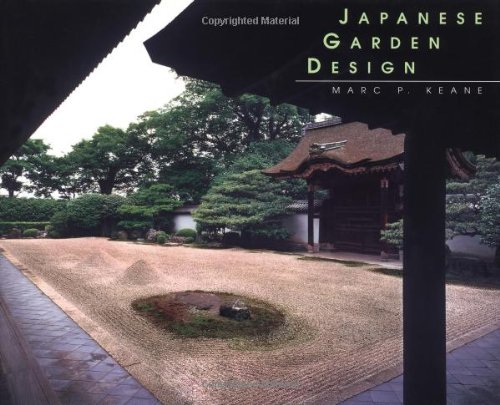 As soon as you enter a Japanese garden you know that it is special and different from western gardens in many ways. But have you ever considered why the gardens of Japan developed such a unique design form? Marc P. Keane’s book Japanese Garden Design addresses this issue by tracing the history of Japanese gardens from their beginnings to the present day and discussing basic aspects of design to provide further insight into the Japanese garden aesthetic.
As soon as you enter a Japanese garden you know that it is special and different from western gardens in many ways. But have you ever considered why the gardens of Japan developed such a unique design form? Marc P. Keane’s book Japanese Garden Design addresses this issue by tracing the history of Japanese gardens from their beginnings to the present day and discussing basic aspects of design to provide further insight into the Japanese garden aesthetic.
The first six chapters of the book consider the major periods of creative inspiration in Japan. For each period the author shows how changes in society, politics, religion, architecture and aesthetics created a new cultural environment that led to new forms of gardens. After an introduction to the prehistoric origins we learn about the gardens of the Heian aristocrats and Zen Buddhism as well as development of the tea garden, tsubo gardens (tiny enclosed townhouse gardens), and Edo stroll gardens. In each case, drawings or pictures supplement the text to bring to life the gardens that are discussed. Keane’s approach, for example, allows us to understand how the Zen Buddhist gardens evolved from the interaction of forces including not only the religion itself but a new aesthetic of frugality brought about by the supremacy of a warrior class as the aristocracy lost controls of their vassals and lands.
The chapters on general design principles, techniques and elements brings the reader closer to an understanding of the essence of Japanese garden design. The author points out that the two most important design principles are learning from nature and interpreting it rather than copying it. He emphasizes the fact that by mastering the techniques used by Japanese garden designers to frame the garden and create balance and composition a designer can create a garden that has a Japanese feel with a wide variety of materials. Keane further notes that although the elements of the Japanese garden, plants, stones sand, and ornaments, can be used to create a “Japanesque” garden, only through an understanding of Japanese design principles and techniques can a garden with a Japanese spirit be created.
The book concludes with a timeline of garden history, a list of plants mentioned in the text, a glossary and bibliography. There are no directions for creating a Japanese garden so this is not for the reader looking for a “how to” text. The book, however, is a good starting point for the process of creating a Japanese garden because it gives the reader the history and basic concepts of the design process.
To buy Japanese Garden Design from Amazon.com click here.
A much cheaper Kindle version is also available.
To buy the Kindle version of Japanese Garden Design from Amazon.com click here.